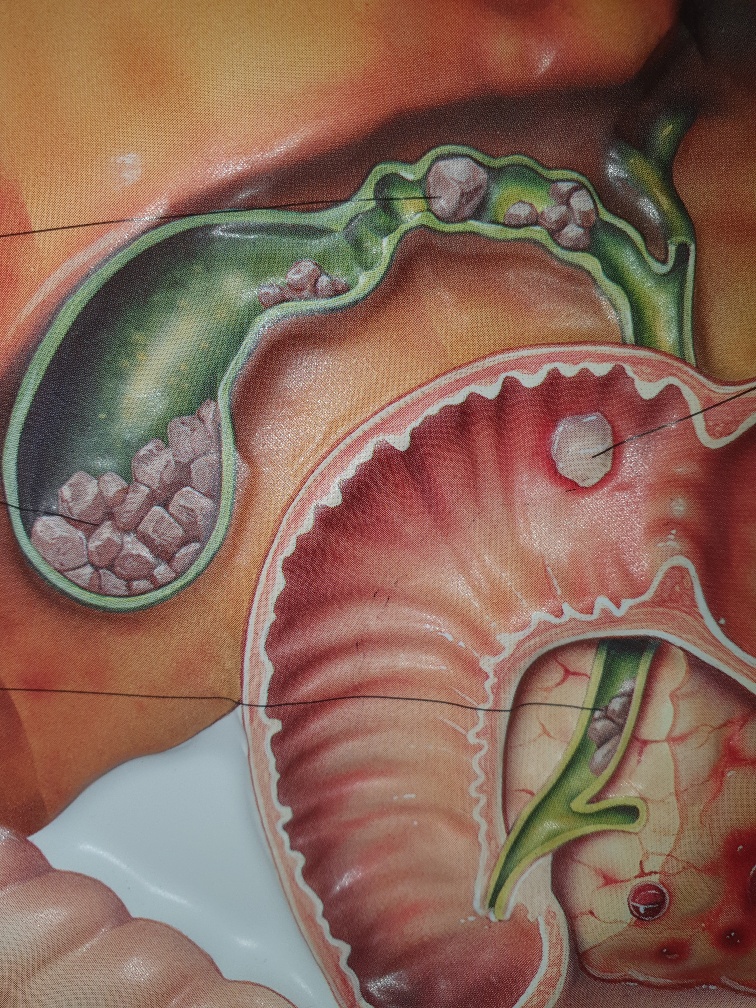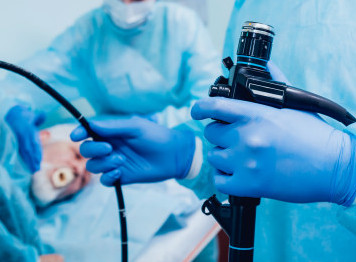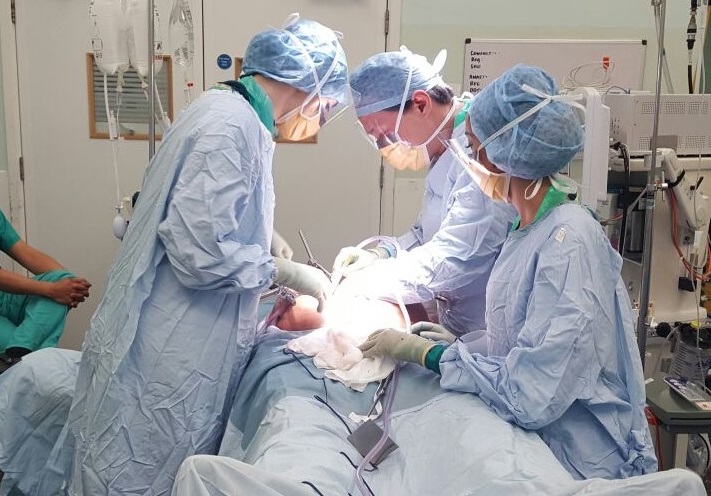
Laparoscopic gallbladder surgery (cholecystectomy) removes the gallbladder and gallstones through several small/mini cuts (incisions) in the abdomen. The surgeon inflates your abdomen with carbon dioxide in order to see clearly.
The surgeon inserts a lighted scope attached to a video camera (laparoscope) into one incision near the belly button.
In several complicated laparoscopic gallbladder surgeries, the surgeon needs to switch to an open surgical method that requires a larger incision. Examples of complications that can require open rather than laparoscopic surgery include unexpected inflammation, scar tissue, injury, and bleeding.
The surgeon inserts a lighted scope attached to a video camera (laparoscope) into one incision near the belly button.
In several complicated laparoscopic gallbladder surgeries, the surgeon needs to switch to an open surgical method that requires a larger incision. Examples of complications that can require open rather than laparoscopic surgery include unexpected inflammation, scar tissue, injury, and bleeding.
Gallstones can cause a variety of symptoms:
Biliary colic, where the patient experiences often severe pain in the upper abdomen caused by stones becoming lodged in the neck of the gallbladder
Cholecystitis, where the gallbladder has become infected due to the presence of gallstones or sludge. Recent National Institute of Clinical Excellence (NICE) guidelines suggest that in these patients, the gallbladder should be removed within 7 days of the onset of symptoms.
Jaundice and Cholangitis: this occurs when gallstones block the common bile duct causing jaundice. When there is infection as well, the patient is at risk of cholangitis, a serious complication of gallstones.
Pancreatitis: sometimes, stones migrate from the gallbladder to the common bile duct and cause inflammation of the pancreas as they do so.
Surgery To Remove the Gallbladder
This is done laparoscopically (“keyhole”) and usually involves a hospital stay of one night. A significant proportion are performed as day cases. The operation is always performed under general anaesthetic and involves four incisions only.
Laparoscopy is the gold standard for removing the gallbladder although a small proportion of patients will require open surgery. The advantages of keyhole surgery are many and principally mean that you should be able to move around freely at an early stage after the operation.
Once the gallbladder is removed, you will be able to eat and drink normally and the body can function normally without a gallbladder. Sometimes, digestion can be affected as bile is no longer stored in the gallbladder, which can result in diarrhoea.








